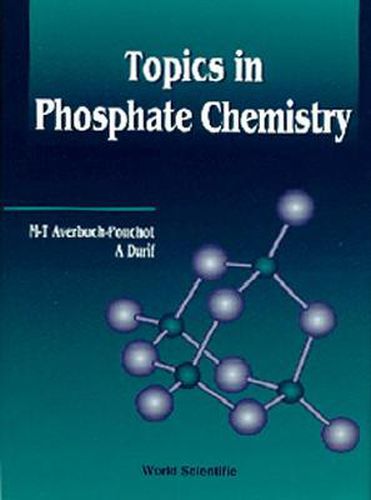Readings Newsletter
Become a Readings Member to make your shopping experience even easier.
Sign in or sign up for free!
You’re not far away from qualifying for FREE standard shipping within Australia
You’ve qualified for FREE standard shipping within Australia
The cart is loading…






This book aims to open new fields of interest in phosphate chemistry and to suggest a new system of classification for phosphates. Due to the very rapid development of this branch of chemistry during the last thirty years and the very confusing nomenclature often used in chemical literature, this first attempt seems not only justified but necessary. The suggested classification is not revolutionary, with respect to condensed phosphates for instance, but establishes clear boundaries between some categories of compounds such as adducts and heteropolyanion-compounds. The first chapters cover the present state of phosphate chemistry in a general way and could serve as an introduction to phosphates for some categories of students or teachers. The next few chapters are devoted to more specialized topics which would be of interest to chemists, crystallographers or solid-state specialists. Some specific aspects of the crystal chemistry of phosphates, such as the geometry of the networks built by acidic phosphoric anions and the geometrical analysis of phosphoric anions are covered. No previous investigation exists for the first of these topics, and the last attempt for an analysis of phosphate anions (by Baur) was made more than 20 years ago. The final chapter presents our new classification for phosphates.
$9.00 standard shipping within Australia
FREE standard shipping within Australia for orders over $100.00
Express & International shipping calculated at checkout
This book aims to open new fields of interest in phosphate chemistry and to suggest a new system of classification for phosphates. Due to the very rapid development of this branch of chemistry during the last thirty years and the very confusing nomenclature often used in chemical literature, this first attempt seems not only justified but necessary. The suggested classification is not revolutionary, with respect to condensed phosphates for instance, but establishes clear boundaries between some categories of compounds such as adducts and heteropolyanion-compounds. The first chapters cover the present state of phosphate chemistry in a general way and could serve as an introduction to phosphates for some categories of students or teachers. The next few chapters are devoted to more specialized topics which would be of interest to chemists, crystallographers or solid-state specialists. Some specific aspects of the crystal chemistry of phosphates, such as the geometry of the networks built by acidic phosphoric anions and the geometrical analysis of phosphoric anions are covered. No previous investigation exists for the first of these topics, and the last attempt for an analysis of phosphate anions (by Baur) was made more than 20 years ago. The final chapter presents our new classification for phosphates.